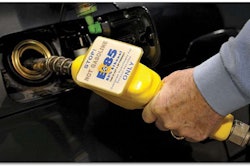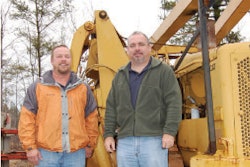Federal Highway Administrator (FHWA) Victor Mendez and Kentucky Gov. Steve Beshear unveiled on Oct. 26 the first segment of I-69 in Kentucky, what FHWA says is “a major step forward that will improve connectivity, benefit businesses and strengthen the economy in this region of western Kentucky.”
Mendez says that that if passed by Congress, piece by piece, President Obama’s American Jobs Act could make more projects like this possible throughout the country.
“Restoring and modernizing our highways, rails, airports and ports will generate thousands of construction-related jobs and put more money in the pockets of working Americans,” said U.S. Transportation Secretary Ray LaHood in a written press statement.
The designation of a 38-mile section of the Wendell H. Ford Western Kentucky Parkway, from I-24 near Eddyville, to the west, and to the Pennyrile Parkway, to the east, is history in the making for transportation. It is anticipated that the corridor will open doors for the region’s economy because more businesses are expected to invest in the area because of improved interstate access.
It is the first segment of what eventually will become an I-69 corridor from Henderson to Fulton in the state.
“Investment in transportation goes hand-in-hand with jobs and economic opportunity,” Mendez said in the written statement. “These improvements will create jobs now and encourage development in the future.”
FHWA and the Kentucky Transportation Cabinet have agreed on the upgrades necessary to bring parts of the parkway up to interstate standards, and that the red, white and blue interstate shield signs can be installed once the contract is advertised. The work will include upgrading bridge rails and guardrails, improving exit and entrance ramps, and raising overpass bridges to increase clearance. Future improvements will include widening paved shoulders and reconstructing the KY 109 interchange at Dawson Springs.
The parkway’s conversion is called for by Congress in federal transportation legislation which named the future I-69 one of several “high-priority corridors.” When not designated by Congress, states must enter into an agreement with FHWA to designate a highway as interstate and meet additional requirements, including all the upgrades.










